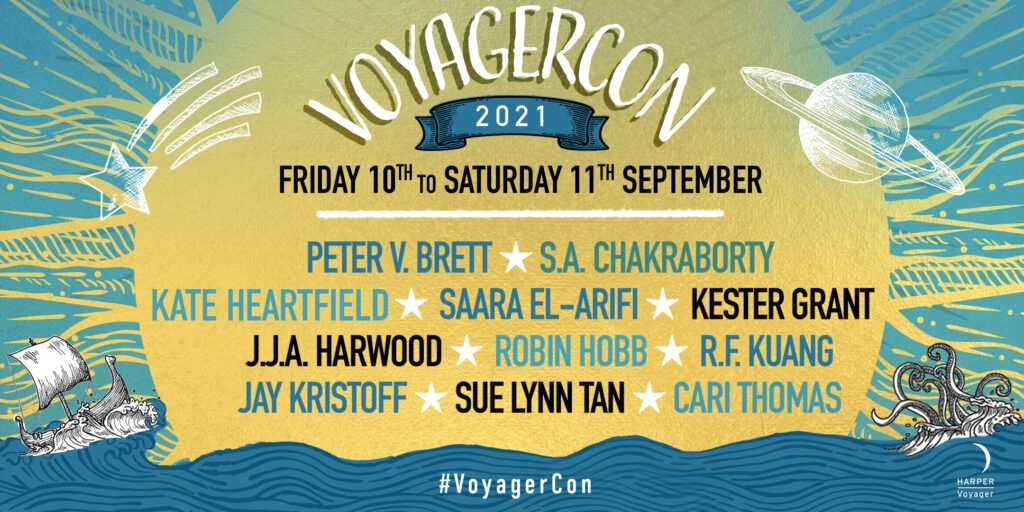Ray Bradbury wrote that Science Fiction is the art of the possible. What are the limits of mankind’s abilities, and what would happen if we reached them? Or, better yet, removed some of those limits?
Or, to draw from Mr. Bradbury’s imagination, what if we made them worse?
Sci-fi reimagines, reinvents, and rebirths, and it is relentless in doing so. Every generation brings forth new and exciting voices that advance the genre, and by extension, our understanding of what’s possible in the real world – both with technology and in society.
That’s why it’s such an excellent space for female characters.
Nowhere is this more obvious than in the realm of young adult Sci-fi. Forget everything you know about the way the world works, it tells us. Science Fiction creates extreme situations on the edge of reality. Its aim is to shake everything up, then throw it in a blender. What’s left is what makes us human.
Now, I’m not saying that other genres are bad at playing this game, exactly. I’m just saying that Sci-fi is better. As proof, here are three female archetypes YA Sci-fi isn’t afraid to destroy:
- The Prize
By far, my least favorite trope in storytelling of any medium is when the prettiest female character is awarded to the male lead upon completion of his heroic activities. Ta-da! You’ve slain the monster; here is your standard-issue Girlfriend.
By and large, Science Fiction, and particularly YA Sci-fi, agrees with me. In Sci-fi books with a male protagonist, the women are rarely treated like trophies. Take Petra Arkanian, for example. In Orson Scott Card’s much-loved novel Ender’s Game and its progeny, there are two female characters who interact with Ender. One is Valentine, Ender’s sister and confidante. The other is Petra.
The fact that she is the only eligible female in Ender’s life might, in other genres, relegate Petra to the role of The Prize, but in the Enderverse, nothing could be less inevitable.
Far from becoming Ender’s trophy, Petra eventually marries his worst enemy, without ever giving her erstwhile commander a single romantic thought.
And she’s one of the good guys.
- The Wife and Mother
Now, this one’s tricky. Unlike with my first point, becoming a wife and mother can be extremely rewarding gigs. The problem arises when a female character has no motivations that don’t involve her husband and kids.
Science Fiction is unflinching in its examination of motherhood. Take Frankenstein, arguably the first Science Fiction novel ever written. It’s about a man who creates life, then fights to protect it. That’s what motherhood is all about.
The movie Aliens takes things a step further. Ripley, a human woman, adopts and defends a human child. She is pitted against the Queen, an alien who is fighting to protect her own children. The point is that motherhood may be part of the human experience, but it’s definitely not exclusive to humans. In the third movie, Ripley becomes “pregnant” with the embryo of another alien queen, and despite its helplessness, she’s anything but maternal toward it. That hardly makes her less of a woman. In this case, it makes her a hero.
Most YA protagonists and female leads aren’t wives and mothers because they’re still teenagers. BUT, never fear, the YA Sci-fi community is hardly silent on the topic. The Hunger Games, for example, takes special care to turn this one directly on its head. Oh, you want to reduce Katniss to being nothing more than someone’s wife, President Snow? Let me know how that works out for you.
When Katniss does become a wife and a mother, it’s on nobody’s terms but her own.
- The Eye Candy
Here’s another instance in which YA Sci-fi is ahead of the pack. In many Sci-fi stories, the appearance of the female protagonist is, refreshingly, a non-issue. Look at The Maze Runner, for example.
But when a girl’s looks do come into play, unsuspecting villains beware. Not surprisingly, many YA Sci-fi authors have a unique point of view to express on the topic. The Uglies series by Scott Westerfeld revolves around the appearance of Tally Youngblood, a girl born ‘ugly.’ In the first novel, she undergoes extreme surgery to become beautiful. In subsequent books, her beauty is weaponized into something terrible, which she then subverts for her own purposes.
In The Ark, I tackle a fourth archetype: the Devoted Daughter. In it, humanity is on a quest to build a perfect society, having left all the outlaws behind and escaped to the stars with only the best and the brightest among us. It asks the question: Can we eradicate crime and injustice, or must we bring it with us wherever we go?
Char is a criminal, an utter embarrassment to her upstanding family. She’s blown every chance at rehabilitation she’s ever been given, so it’s not hard for her to imagine that her parents would prefer her to remain imprisoned on Earth when the world-ending meteor strikes. After all, they’ve long since secured their own spots on an Ark. They’re off to a brave new world. One where, if all goes according to plan, outlaws like Char will never set foot.
Char’s desire to be reconciled with her family motivates her to break out of prison and stow away on the last spaceship leaving Earth, all of which just so happens to involve breaking a whole new slew of laws. Will her parents want her if she is doomed to be a permanent outcast and perpetual disappointment? Char wants the same thing the rest of Earth’s survivors are trying to achieve: a clean slate. But in the wake of her many past and ongoing mistakes, can she ever be given a truly fresh start?
As Mr. Bradbury might say, it’s possible.
Laura’s novel The Ark will be released in eBook on 26 March 2015. Preorder now!
